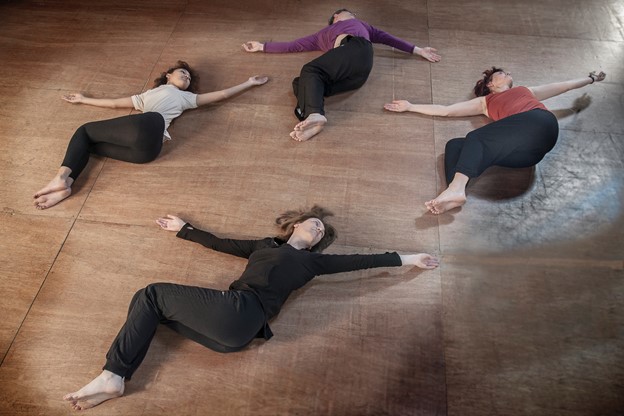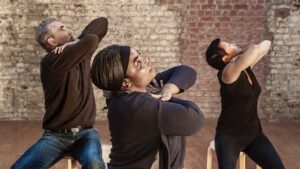
What is Feldenkrais?

The Feldenkrais method is an approach for improving both physical and mental functioning through the exploration of body movement patterns and the use of attention. The practice is based on the brain’s innate capacity for learning and the potential for lifelong development and growth. It emphasizes kinaesthetic awareness, promoting efficient and graceful actions, and facilitating overall well-being.
Through exploratory movements and attention to sensory perception, individuals identify and learn alternatives to their habitual movement patterns, fostering ease and promoting lifelong development. This method, rooted in principles of neuroplasticity, has diverse applications, from reducing pain, navigating neurological challenges and improving mobility to enhancing the performance of athletes, dancers, musicians, and actors.
By exploring our personal patterns of self-use with attention, we gain clarity on what we are doing and can therefore discover new, pleasurable and more efficient ways of moving and being.
Engaging with Feldenkrais
There are two primary modalities of learning in the Feldenkrais method. One is a group class structure called Awareness Through Movement (ATM). In these classes participants are verbally guided through a series of carefully structured movement explorations of familiar actions designed to evoke a more synergistic use of one-self. By cultivating mindfulness and refining sensory awareness, individuals can discover new movement possibilities, shift habitual limitations and develop a clearer and more complete self image. The movements are not demonstrated by the practitioner, rather participants are invited, through non-judgmental and exploratory mindset, to sense and identify ease and quality in their own movements, fostering and developing greater inner authority. The lessons are generally done in sitting or lying and are highly adaptable to people of all abilities.

The other modality, called Functional Integration (FI), is a one-on-one hands-on interaction specifically designed to meet the needs of an individual. Individuals remain comfortably dressed and usually lie or sit on a low table while practitioners, primarily through the use of their hands and verbal instruction, guide individuals to a new and more varied use of themselves. Similar to Awareness Through Movement lessons, these individualized sessions use movement as a means to promote changes in patterns of moving, sensing, thinking and interacting with their environment.
Further reading and resources:
Moshe Feldenkrais: His Life and work

